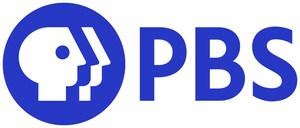New Research Reveals PreK-12 Educators Increasingly Value and Use Digital Media
Annual Grunwald survey for PBS shows educators integrating more digital media into instruction; pre-K use mirrors strong interest of K-12 educators in digital media and social networking
ARLINGTON, Va., Jan. 5 /PRNewswire/ -- According to a new national research report, "Digitally Inclined," compiled by Grunwald Associates LLC for PBS, teachers are making significant progress in adoption of digital media and Internet use. These findings clearly signal widespread changes in both early childhood and K-12 education, including more effective individualized instruction.
Grunwald Associates LLC, the independent research and consulting firm, which conducted the study under a grant from PBS, released the findings today from their annual survey on educators' use of media and technology. PBS is sharing select findings from the 2009 survey conducted by Grunwald, which has been examining educators' media use for PBS since 2002, to provide information about both instructional needs and trends to education leaders, policymakers, and the media industry. This year's survey includes data collected from pre-K educators for the first time.
"The significant increases in the usage, frequency and access to digital media in the classroom over the past several years, along with the research showing that integrating multimedia and technology into instruction can boost student achievement, is driving our strategy to produce the most effective media for learning," said Rob Lippincott, senior vice president of education for PBS. "We're especially pleased that PBS emerged as the number one source of educational TV and online content among pre-K teachers in the survey."
Key findings from the 2009 Grunwald and PBS survey include:
- More than three-quarters (76 percent) of K-12 educators say they use digital media, up significantly from 69 percent in 2008. Of K-12 teachers who use digital media in the classroom, 80 percent are frequent or regular users. Classroom use of digital media is less common among preK-educators, with only one-third (33 percent) reporting use. However, pre-K educators who use digital media use it as frequently as K-12 teachers do.
- K-12 teachers increasingly access video online. While teachers narrowly prefer using purchased or recorded DVDs, 72 percent reported they stream or download content from the Internet, up from 65 percent in 2008. About one in three (29 percent) pre-K educators use this method.
- Teachers' use of video is one indication that they are becoming more strategic in selecting short chunks of electronic content and targeting use for specific purposes. A large majority of pre-K and K-12 teachers strongly agree that TV and video content is more effective when it is integrated with other instructional resources in the classroom. A majority of teachers are more likely to use video segments rather than entire programs, with average segment length of about five to 10 minutes.
- Teachers are increasing their use of games, student-produced presentations and social media. Pre-K and K-12 teachers value many different types of digital media, with games and activities for students to use in school (65 percent) topping the list. Teachers increasingly value student-produced multimedia, student-created Web sites, blogs, and social media communities as well.
- One-quarter of K-12 educators say they belong to an online community specifically for teachers, and those who use social networking sites are comfortable with a variety of online activities. Results are similar for pre-K educators.
- PBS content and Web sites are the top choice over any other media company or channel among pre-K educators. In addition to being the top web site choice, PBS is also the go-to source for recording and downloading content for pre-K teachers. Pre-K teachers are more likely to recommend PBS resources to parents to support learning outside of class, and to watch PBS themselves, than are K-12 teachers.
PBS is developing a Digital Learning Library to help teachers continue to use multimedia in more strategic and effective ways to improve student learning. The PBS Digital Learning Library is a growing collection of digital learning objects - video, audio, images, and interactive simulations designed for classroom use - that will be available through PBS member stations nationwide later this year.
PBS offers extensive, high-quality educational programming, resources and services. PBS Teachers® (pbsteachers.org) is the Web portal to PBS' preK-12 educational services, such as the leading online teacher professional development provider, PBS TeacherLine®, and a searchable library of more than 9,000 free local and national standards-based instructional resources, including on-demand video and interactive games.
To access the free report, "Digitally Inclined," go to http://www.pbs.org/teachers/_files/pdf/annual-pbs-survey-report.pdf.
About PBS
PBS, with its 356 member stations, offers all Americans - from every walk of life - the opportunity to explore new ideas and new worlds through television and online content. Each month, PBS reaches more than 124 million people on-air and online, inviting them to experience the worlds of science, history, nature and public affairs; hear diverse viewpoints; and take front row seats to world-class drama and performances. PBS' broad array of programs has been consistently honored by the industry's most coveted award competitions. Teachers of children from pre-K through 12th grade turn to PBS for digital content and services that help bring classroom lessons to life. PBS' premier children's TV programming and Web site, pbskids.org, are parents' and teachers' most trusted partners in inspiring and nurturing curiosity and love of learning in children. More information about PBS is available at www.pbs.org, one of the leading dot-org Web sites on the Internet.
SOURCE PBS
WANT YOUR COMPANY'S NEWS FEATURED ON PRNEWSWIRE.COM?
Newsrooms &
Influencers
Digital Media
Outlets
Journalists
Opted In





Share this article